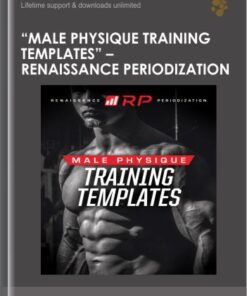Attachment Centered Play Therapy: Repair Relational Trauma and Build Secure Attachment to Accelerate Family Treatment – Clair Mellenthin
Question and Answer
What is trauma,?
trauma, is When grief, and loss disrupts the family system, a child may feel unprotected, unloved, or disbelieved, causing relational injury and at times rupture the attachment bond..
How does trauma, disrupts?
When trauma, grief, and loss disrupts the family system, a child may feel unprotected, unloved, or disbelieved, causing relational injury and at times rupture the attachment bond.
What is Children,?
Children, is not having the words to express how they feel, display the hurt in maladaptive ways -- aggression, rage, defiance, oppositional behaviors, shutting down, hiding away, or numbing..
How does Children, not having?
Children, not having the words to express how they feel, display the hurt in maladaptive ways -- aggression, rage, defiance, oppositional behaviors, shutting down, hiding away, or numbing.
What is Purchase Attachment?
Purchase Attachment is Centered Play Therapy: Repair Relational Trauma and Build Secure Attachment to Accelerate Family Treatment - Clair Mellenthin courses at here with PRICE $199.99 $84 When trauma, grief, and loss disrupts the family system, a child may feel unprotected, unloved, or disbelieved, causing relational injury and at times rupture the attachment bond..
How does Purchase Attachment Centered?
Purchase Attachment Centered Play Therapy: Repair Relational Trauma and Build Secure Attachment to Accelerate Family Treatment - Clair Mellenthin courses at here with PRICE $199.99 $84 When trauma, grief, and loss disrupts the family system, a child may feel unprotected, unloved, or disbelieved, causing relational injury and at times rupture the attachment bond.
What is Children,?
Children, is not having the words to express how they feel, display the hurt in maladaptive ways -- aggression, rage, defiance, oppositional behaviors, shutting down, hiding away, or numbing..
How does Children, not having?
Children, not having the words to express how they feel, display the hurt in maladaptive ways -- aggression, rage, defiance, oppositional behaviors, shutting down, hiding away, or numbing.
What is the parent,?
the parent, is For shame is a factor..
How does the parent, is?
For the parent, shame is a factor.
What is Shame?
Shame is that they can’t “parent away” the hurt and the misbehavior—that their love isn’t “good enough”..
How does Shame can’t “parent away”?
Shame that they can’t “parent away” the hurt and the misbehavior—that their love isn’t “good enough”.
What is we?
we is How do as therapists, help families begin repairing and rebuilding the lost connection/disruption?.
How does we do?
How do we as therapists, help families begin repairing and rebuilding the lost connection/disruption?
What is me?
me is Watch in this interactive recording to discover an integrative therapeutic approach, Attachment Centered Play Therapy that includes the parents in the therapy process..
How does me Watch?
Watch me in this interactive recording to discover an integrative therapeutic approach, Attachment Centered Play Therapy that includes the parents in the therapy process.
What is The parent?
The parent is is integral in creating conditions of security and trustworthiness to address attachment wounds, trauma, grief and loss..
How does The parent is?
The parent is integral in creating conditions of security and trustworthiness to address attachment wounds, trauma, grief and loss.
What is method?
method is This developmentally appropriate, client-centered brings a holistic, systemic approach to address: Vulnerability to acknowledge the hurt, and the roadblocks Challenging issues of shame, vulnerability, grief, and loss Aggression and defiance and other maladaptive behavioral issues Attachment centered and proactive strategies instead of reactivity or reactive responses Repairing and strengthening the bonds of attachment between parent and child Parents becoming a resource, as well as coregulator for their child Rapport building with parents (this is a MUST in child and family therapy) You’ll learn new and innovative attachment-centered play therapy techniques including hands on experiential activities, guided imagery, sand tray interventions, and expressive arts—practicing sand tray therapy, techniques assessing family relationships, bonds of attachment, and family dynamics..
How does method brings?
This developmentally appropriate, client-centered method brings a holistic, systemic approach to address: Vulnerability to acknowledge the hurt, and the roadblocks Challenging issues of shame, vulnerability, grief, and loss Aggression and defiance and other maladaptive behavioral issues Attachment centered and proactive strategies instead of reactivity or reactive responses Repairing and strengthening the bonds of attachment between parent and child Parents becoming a resource, as well as coregulator for their child Rapport building with parents (this is a MUST in child and family therapy) You’ll learn new and innovative attachment-centered play therapy techniques including hands on experiential activities, guided imagery, sand tray interventions, and expressive arts—practicing sand tray therapy, techniques assessing family relationships, bonds of attachment, and family dynamics.
What is We?
We is will explore difficult cases, ask questions, develop new assessment skills, and explore styles of attachment and how this plays out in therapeutic relationships with our clients..
How does We will explore?
We will explore difficult cases, ask questions, develop new assessment skills, and explore styles of attachment and how this plays out in therapeutic relationships with our clients.
What is parent involvement in play therapy?
parent involvement in play therapy is Evaluate how to introduce and maintain to promote a secure attachment..
How does parent involvement in play therapy Evaluate?
Evaluate how to introduce and maintain parent involvement in play therapy to promote a secure attachment.
What is two attachment?
two attachment is Demonstrate centered play therapy techniques to decrease aggression and defiance in children..
How does two attachment Demonstrate?
Demonstrate two attachment centered play therapy techniques to decrease aggression and defiance in children.
What is generational attachment patterns?
generational attachment patterns is Conceptualize and how these manifests in family-based play therapy..
How does generational attachment patterns Conceptualize?
Conceptualize generational attachment patterns and how these manifests in family-based play therapy.
What is attachment theory?
attachment theory is Analyze as it applies to play therapy to provide integrated therapeutic treatment..
How does attachment theory Analyze?
Analyze attachment theory as it applies to play therapy to provide integrated therapeutic treatment.
What is the four key concepts of attachment theory?
the four key concepts of attachment theory is Evaluate and how these concepts apply to attachment centered play therapy..
How does the four key concepts of attachment theory Evaluate?
Evaluate the four key concepts of attachment theory and how these concepts apply to attachment centered play therapy.
What is various family systems?
various family systems is Analyze through the lens of attachment theory to strengthen clinical assessment skills Advancing Family Treatment with Play Therapy 4 key concepts of attachment Blending attachment theory with play therapy Attachment patterns across the lifespan and impact on parent/child relationship Risks and limitations Invite Parents to Play Engagement strategies to strengthen parent/child relationship Roadblocks and triggers – parent/child/therapist Shame and vulnerability – shame shields Build rappaport and make room for parent in the playroom Sand tray, genograms, play-based treatment planning Establish boundaries and set expectations Encourage participation Attachment Centered Play Therapy Strategies Treatment of relational trauma – Attachment, wounding and ruptures Parent/child relationship cycle Generational attachment patterns - Catch me if you can Butterfly fly away Two hands Empowerment collage Case Studies of Abuse; Healing Attachment Wounds.
How does various family systems Analyze?
Analyze various family systems through the lens of attachment theory to strengthen clinical assessment skills Advancing Family Treatment with Play Therapy 4 key concepts of attachment Blending attachment theory with play therapy Attachment patterns across the lifespan and impact on parent/child relationship Risks and limitations Invite Parents to Play Engagement strategies to strengthen parent/child relationship Roadblocks and triggers – parent/child/therapist Shame and vulnerability – shame shields Build rappaport and make room for parent in the playroom Sand tray, genograms, play-based treatment planning Establish boundaries and set expectations Encourage participation Attachment Centered Play Therapy Strategies Treatment of relational trauma – Attachment, wounding and ruptures Parent/child relationship cycle Generational attachment patterns - Catch me if you can Butterfly fly away Two hands Empowerment collage Case Studies of Abuse; Healing Attachment Wounds
What is Challenging Emotional and Behavioral Disorders Defiance,?
Challenging Emotional and Behavioral Disorders Defiance, is ODD, moodiness, anger, aggressiveness and school refusal Attachment injuries at root of undesirable behavior Prescriptive play therapy interventions Self-regulation, co-regulation calm down jars, guided imagery Case Studies of Extreme Defiance and School Refusal.
How does Challenging Emotional and Behavioral Disorders Defiance, anger,?
Challenging Emotional and Behavioral Disorders Defiance, ODD, moodiness, anger, aggressiveness and school refusal Attachment injuries at root of undesirable behavior Prescriptive play therapy interventions Self-regulation, co-regulation calm down jars, guided imagery Case Studies of Extreme Defiance and School Refusal
What is Strategies?
Strategies is to Promote Positive Attachment-Based Parenting Maximize parent involvement to rebuild trust, repair injuries Proactive vs reactive parenting Get parent buy in Case Study of Proactive vs Reactive Parenting Tag: Attachment Centered Play Therapy: Repair Relational Trauma and Build Secure Attachment to Accelerate Family Treatment - Clair Mellenthin Review..
How does Strategies rebuild?
Strategies to Promote Positive Attachment-Based Parenting Maximize parent involvement to rebuild trust, repair injuries Proactive vs reactive parenting Get parent buy in Case Study of Proactive vs Reactive Parenting Tag: Attachment Centered Play Therapy: Repair Relational Trauma and Build Secure Attachment to Accelerate Family Treatment - Clair Mellenthin Review.
What is Attachment?
Attachment is Centered Play Therapy: Repair Relational Trauma and Build Secure Attachment to Accelerate Family Treatment - Clair Mellenthin download..
How does Attachment Centered?
Attachment Centered Play Therapy: Repair Relational Trauma and Build Secure Attachment to Accelerate Family Treatment - Clair Mellenthin download.
What is Attachment?
Attachment is Centered Play Therapy: Repair Relational Trauma and Build Secure Attachment to Accelerate Family Treatment - Clair Mellenthin discount..
How does Attachment Centered?
Attachment Centered Play Therapy: Repair Relational Trauma and Build Secure Attachment to Accelerate Family Treatment - Clair Mellenthin discount.
What is Purchase Attachment?
Purchase Attachment is Centered Play Therapy: Repair Relational Trauma and Build Secure Attachment to Accelerate Family Treatment - Clair Mellenthin courses at here with PRICE $199.99 $84.
How does Purchase Attachment Centered?
Purchase Attachment Centered Play Therapy: Repair Relational Trauma and Build Secure Attachment to Accelerate Family Treatment - Clair Mellenthin courses at here with PRICE $199.99 $84
 "Is Your Soul Allowing You To Heal?" -- All 7 Recordings in the Series (6 Hours of Audio Clearings)
1 × $83.00
"Is Your Soul Allowing You To Heal?" -- All 7 Recordings in the Series (6 Hours of Audio Clearings)
1 × $83.00 10x Wealth and Business New – Brendon Burchard
1 × $123.00
10x Wealth and Business New – Brendon Burchard
1 × $123.00 NPL Mastery + MASSIVE Oto bonuses
1 × $130.00
NPL Mastery + MASSIVE Oto bonuses
1 × $130.00 2019 Virtual Summer School - Dr. Richard Nongard
1 × $42.00
2019 Virtual Summer School - Dr. Richard Nongard
1 × $42.00 2-Day Intensive Training: Shame, Guilt and Self-Criticism Certificate Course - Pavel Somov
1 × $124.00
2-Day Intensive Training: Shame, Guilt and Self-Criticism Certificate Course - Pavel Somov
1 × $124.00 2-Day: Medical Screening and Differential Diagnosis Intensive Training Course - Shaun Goulbourne
1 × $180.00
2-Day: Medical Screening and Differential Diagnosis Intensive Training Course - Shaun Goulbourne
1 × $180.00 10 Photoshop Retouching Courses In - 1 Course - Manfred Werner
1 × $40.00
10 Photoshop Retouching Courses In - 1 Course - Manfred Werner
1 × $40.00 2-Day Advanced Course: Executive Functioning Skills for Children & Adolescents...- Lynne Kenney
1 × $180.00
2-Day Advanced Course: Executive Functioning Skills for Children & Adolescents...- Lynne Kenney
1 × $180.00 MyBeliefworks for Changing Beliefs About Work, Job, Career - Jimmy Mack
1 × $34.00
MyBeliefworks for Changing Beliefs About Work, Job, Career - Jimmy Mack
1 × $34.00 $1K A Day Fast Track – Merlin Holmes
2 × $123.00
$1K A Day Fast Track – Merlin Holmes
2 × $123.00 Managing Bedside Emergencies Online Course - Pam Collins & Cyndi Zarbano
1 × $85.00
Managing Bedside Emergencies Online Course - Pam Collins & Cyndi Zarbano
1 × $85.00 1 Hour SEO | Become a Technical Marketer
1 × $40.00
1 Hour SEO | Become a Technical Marketer
1 × $40.00 5 Diamond Self-hypnosis SuperPack – Steve G Jones
1 × $144.00
5 Diamond Self-hypnosis SuperPack – Steve G Jones
1 × $144.00 101: Access Your Psych Capital - The ReThink Group
1 × $90.00
101: Access Your Psych Capital - The ReThink Group
1 × $90.00 Make 'Em Laugh & Take Their Money - Dan Kennedy
1 × $17.00
Make 'Em Laugh & Take Their Money - Dan Kennedy
1 × $17.00 "Male Physique Training Templates" - Renaissance Periodization
1 × $42.00
"Male Physique Training Templates" - Renaissance Periodization
1 × $42.00 12 Dimensions of Mastery (Lifebook Challenge)
12 Dimensions of Mastery (Lifebook Challenge)
 123 Manifest It - Marlenea Johnson
123 Manifest It - Marlenea Johnson
 21 Day Inner Healing Journey - Jimmy Evans
21 Day Inner Healing Journey - Jimmy Evans